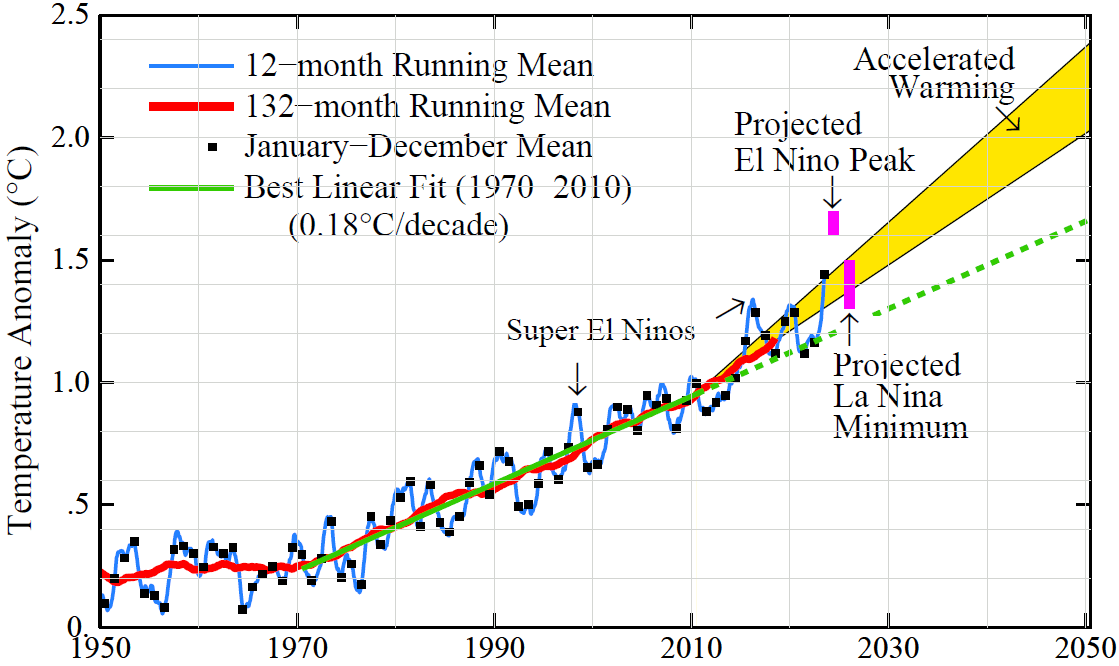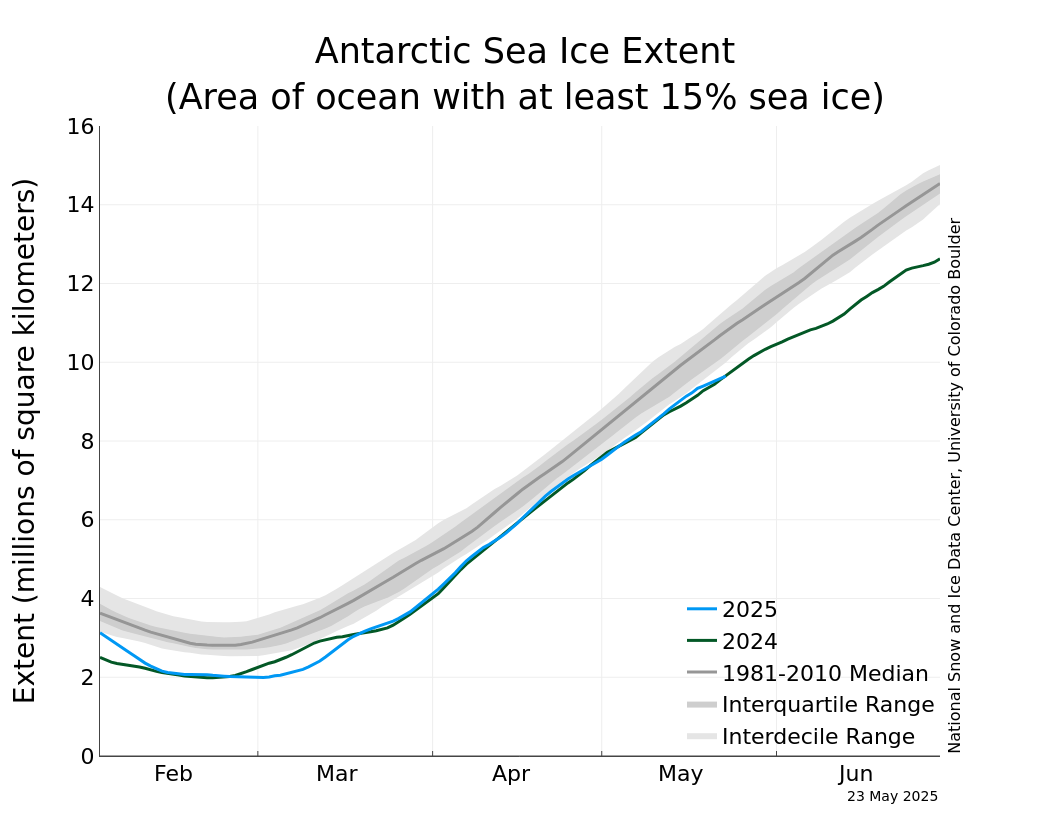Welcome to DU!
The truly grassroots left-of-center political community where regular people, not algorithms, drive the discussions and set the standards.
Join the community:
Create a free account
Support DU (and get rid of ads!):
Become a Star Member
Latest Breaking News
Editorials & Other Articles
General Discussion
The DU Lounge
All Forums
Issue Forums
Culture Forums
Alliance Forums
Region Forums
Support Forums
Help & Search
Environment & Energy
Related: About this forumCNN: The 1.5-degree climate goal may be 'deader than a doornail,' and scientists are bitterly divided over it
https://www.cnn.com/2024/01/18/climate/paris-climate-goal-threatened-intl/index.htmlThe 1.5-degree climate goal may be ‘deader than a doornail,’ and scientists are bitterly divided over it
By Laura Paddison, CNN
Updated 7:47 AM EST, Thu January 18, 2024
(CNN) — For years, the fight against climate change has been symbolized by one number: 1.5.
Ever since countries agreed in 2015 to an ambition of restricting global warming to 1.5 degrees Celsius above pre-industrial levels, the number has become synonymous with staving off catastrophic climate change.
But what if the battle to keep global warming from overshooting this limit has already been lost?
Some prominent scientists argue it has and it’s irresponsible to sugarcoat the truth. For others, that view is not only wrong, but even “dangerous.”
…
By Laura Paddison, CNN
Updated 7:47 AM EST, Thu January 18, 2024
(CNN) — For years, the fight against climate change has been symbolized by one number: 1.5.
Ever since countries agreed in 2015 to an ambition of restricting global warming to 1.5 degrees Celsius above pre-industrial levels, the number has become synonymous with staving off catastrophic climate change.
But what if the battle to keep global warming from overshooting this limit has already been lost?
Some prominent scientists argue it has and it’s irresponsible to sugarcoat the truth. For others, that view is not only wrong, but even “dangerous.”
…
InfoView thread info, including edit history
TrashPut this thread in your Trash Can (My DU » Trash Can)
BookmarkAdd this thread to your Bookmarks (My DU » Bookmarks)
7 replies, 644 views
ShareGet links to this post and/or share on social media
AlertAlert this post for a rule violation
PowersThere are no powers you can use on this post
EditCannot edit other people's posts
ReplyReply to this post
EditCannot edit other people's posts
Rec (5)
ReplyReply to this post
7 replies
 = new reply since forum marked as read
Highlight:
NoneDon't highlight anything
5 newestHighlight 5 most recent replies
= new reply since forum marked as read
Highlight:
NoneDon't highlight anything
5 newestHighlight 5 most recent replies
CNN: The 1.5-degree climate goal may be 'deader than a doornail,' and scientists are bitterly divided over it (Original Post)
OKIsItJustMe
Jan 2024
OP
OKIsItJustMe
(20,739 posts)1. CNN: The planet is heating up faster than predicted, says scientist who sounded climate alarm in the 1980s
https://www.cnn.com/2023/11/02/climate/the-planet-is-heating-up-faster-than-predicted-says-scientist-who-first-warned-the-world-about-climate-change/index.html
The planet is heating up faster than predicted, says scientist who sounded climate alarm in the 1980s
By Laura Paddison, CNN
Updated 1:19 PM EDT, Thu November 2, 2023
(CNN) — The planet is on track to heat up at a much faster rate than scientists have previously predicted, meaning a key global warming threshold could be breached this decade, according to a new study co-authored by James Hansen — the US scientist widely credited with being the first to publicly sound the alarm on the climate crisis in the 1980s.
In the paper, published Thursday in the journal Oxford Open Climate Change, Hansen and more than a dozen other scientists used a combination of paleoclimate data, including data from polar ice cores and tree rings, climate models and observational data, to conclude that the Earth is much more sensitive to climate change than previously understood.
“We are in the early phase of a climate emergency,” according to the report, which warns a surge of heat “already in the pipeline” will rapidly push global temperatures beyond what has been predicted, resulting in warming that exceeds 1.5 degrees Celsius above pre-industrial levels in the 2020s, and above 2 degrees Celsius before 2050.
The findings add to a slew of recent research that concludes the world is hurtling toward 1.5 degrees, a threshold beyond which the impacts of climate change — including extreme heat, drought and floods — will become significantly harder for humans to adapt to.
…
By Laura Paddison, CNN
Updated 1:19 PM EDT, Thu November 2, 2023
(CNN) — The planet is on track to heat up at a much faster rate than scientists have previously predicted, meaning a key global warming threshold could be breached this decade, according to a new study co-authored by James Hansen — the US scientist widely credited with being the first to publicly sound the alarm on the climate crisis in the 1980s.
In the paper, published Thursday in the journal Oxford Open Climate Change, Hansen and more than a dozen other scientists used a combination of paleoclimate data, including data from polar ice cores and tree rings, climate models and observational data, to conclude that the Earth is much more sensitive to climate change than previously understood.
“We are in the early phase of a climate emergency,” according to the report, which warns a surge of heat “already in the pipeline” will rapidly push global temperatures beyond what has been predicted, resulting in warming that exceeds 1.5 degrees Celsius above pre-industrial levels in the 2020s, and above 2 degrees Celsius before 2050.
The findings add to a slew of recent research that concludes the world is hurtling toward 1.5 degrees, a threshold beyond which the impacts of climate change — including extreme heat, drought and floods — will become significantly harder for humans to adapt to.
…
cachukis
(2,666 posts)2. We are in predicament. Simply, plan well.
OKIsItJustMe
(20,739 posts)3. I question how well anyone can plan at this point
Please note date of publication:
https://openatmosphericsciencejournal.com/contents/volumes/V2/TOASCJ-2-217/TOASCJ-2-217.pdf
https://openatmosphericsciencejournal.com/contents/volumes/V2/TOASCJ-2-217/TOASCJ-2-217.pdf
The Open Atmospheric Science Journal, 2008, 2, 217-231
Target Atmospheric CO₂ : Where Should Humanity Aim?
James Hansen*,¹ ² , Makiko Sato¹ ² , Pushker Kharecha¹ ² , David Beerling³ , Robert Berner⁴ , Valerie Masson-Delmotte⁵ , Mark Pagani⁴ , Maureen Raymo⁶ , Dana L. Royer⁷ and James C. Zachos⁸
…
Abstract: Paleoclimate data show that climate sensitivity is ~3°C for doubled CO₂, including only fast feedback processes. Equilibrium sensitivity, including slower surface albedo feedbacks, is ~6°C for doubled CO₂ for the range of climate states between glacial conditions and ice-free Antarctica. Decreasing CO₂ was the main cause of a cooling trend that began 50 million years ago, the planet being nearly ice-free until CO₂ fell to 450 ± 100 ppm ; barring prompt policy changes, that critical level will be passed, in the opposite direction, within decades. If humanity wishes to preserve a planet similar to that on which civilization developed and to which life on Earth is adapted, paleoclimate evidence and ongoing climate change suggest that CO₂ will need to be reduced from its current 385 ppm to at most 350 ppm, but likely less than that. The largest uncertainty in the target arises from possible changes of non-CO₂ forcings. An initial 350 ppm CO₂ target may be achievable by phasing out coal use except where CO₂ is captured and adopting agricultural and forestry practices that sequester carbon. If the present overshoot of this target CO₂ is not brief, there is a possibility of seeding irreversible catastrophic effects.
…
5. SUMMARY
Humanity today, collectively, must face the uncomfortable fact that industrial civilization itself has become the principal driver of global climate. If we stay our present course, using fossil fuels to feed a growing appetite for energy-intensive life styles, we will soon leave the climate of the Holocene, the world of prior human history. The eventual response to doubling pre -industrial atmospheric CO₂ likely would be a nearly ice-free planet, preceded by a period of chaotic change with continually changing shorelines.
…
Present policies, with continued construction of coal-fired power plants without CO₂ capture, suggest that decision-makers do not appreciate the gravity of the situation. We must begin to move now toward the era beyond fossil fuels. Continued growth of greenhouse gas emissions, for just another decade, practically eliminates the possibility of near-term return of atmospheric composition beneath the tipping level for catastrophic effects.
The most difficult task, phase-out over the next 20-25 years of coal use that does not capture CO₂, is Herculean, yet feasible when compared with the efforts that went into World War II. The stakes, for all life on the planet, surpass those of any previous crisis. The greatest danger is continued ignorance and denial, which could make tragic consequences unavoidable.
…
Target Atmospheric CO₂ : Where Should Humanity Aim?
James Hansen*,¹ ² , Makiko Sato¹ ² , Pushker Kharecha¹ ² , David Beerling³ , Robert Berner⁴ , Valerie Masson-Delmotte⁵ , Mark Pagani⁴ , Maureen Raymo⁶ , Dana L. Royer⁷ and James C. Zachos⁸
…
Abstract: Paleoclimate data show that climate sensitivity is ~3°C for doubled CO₂, including only fast feedback processes. Equilibrium sensitivity, including slower surface albedo feedbacks, is ~6°C for doubled CO₂ for the range of climate states between glacial conditions and ice-free Antarctica. Decreasing CO₂ was the main cause of a cooling trend that began 50 million years ago, the planet being nearly ice-free until CO₂ fell to 450 ± 100 ppm ; barring prompt policy changes, that critical level will be passed, in the opposite direction, within decades. If humanity wishes to preserve a planet similar to that on which civilization developed and to which life on Earth is adapted, paleoclimate evidence and ongoing climate change suggest that CO₂ will need to be reduced from its current 385 ppm to at most 350 ppm, but likely less than that. The largest uncertainty in the target arises from possible changes of non-CO₂ forcings. An initial 350 ppm CO₂ target may be achievable by phasing out coal use except where CO₂ is captured and adopting agricultural and forestry practices that sequester carbon. If the present overshoot of this target CO₂ is not brief, there is a possibility of seeding irreversible catastrophic effects.
…
5. SUMMARY
Humanity today, collectively, must face the uncomfortable fact that industrial civilization itself has become the principal driver of global climate. If we stay our present course, using fossil fuels to feed a growing appetite for energy-intensive life styles, we will soon leave the climate of the Holocene, the world of prior human history. The eventual response to doubling pre -industrial atmospheric CO₂ likely would be a nearly ice-free planet, preceded by a period of chaotic change with continually changing shorelines.
…
Present policies, with continued construction of coal-fired power plants without CO₂ capture, suggest that decision-makers do not appreciate the gravity of the situation. We must begin to move now toward the era beyond fossil fuels. Continued growth of greenhouse gas emissions, for just another decade, practically eliminates the possibility of near-term return of atmospheric composition beneath the tipping level for catastrophic effects.
The most difficult task, phase-out over the next 20-25 years of coal use that does not capture CO₂, is Herculean, yet feasible when compared with the efforts that went into World War II. The stakes, for all life on the planet, surpass those of any previous crisis. The greatest danger is continued ignorance and denial, which could make tragic consequences unavoidable.
…
OKIsItJustMe
(20,739 posts)4. Annual CO₂ emissions
OKIsItJustMe
(20,739 posts)5. Climate Reanalyzer: Daily Surface Air Temperature, World (90S-90N, 0-360E)
OKIsItJustMe
(20,739 posts)6. Antarctic Sea Ice Extent (Area of ocean with at least 15% sea ice)
OKIsItJustMe
(20,739 posts)7. Global temperature relative to 1880-1920 based on the GISS analysis.

Global temperature relative to 1880-1920 based on the GISS analysis.¹ ² Projected El Nino warming and La Nina cooling discusses in text and decadal acceleration in Pipeline.³
Fig. 6. From Global Warming Acceleration: Causes and Consequences, James Hansen, et al.


